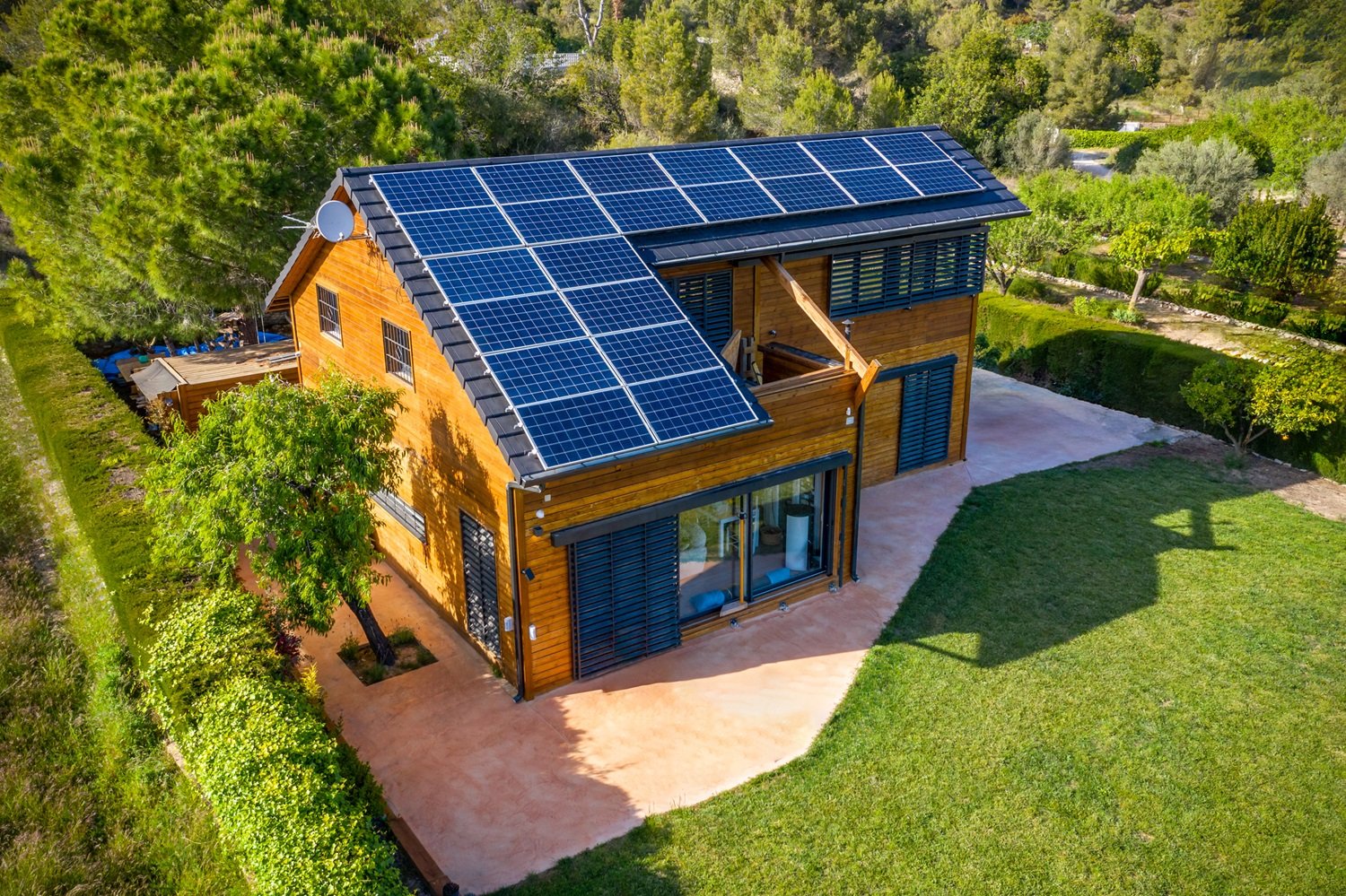
Get matched with top solar panel installers in your area
Enter your zip and get matched with up to 3 pros
Matching on HomeAdvisor


Solar panel installers in Salt Lake City

Here at Suncatcher Energy, we pride our company on reliability, great communication, integrity, and quality work. We strongly believe in giving our absolute best in all of our projects no matter how big or small. We are experts in our trade and will always keep you educated on your particular task or project. We look forward to earning your business!
"Great experience. Low pressure with all costs and benefits laid out in an easy to understand manner. The company is friendly to work with and prompt in responding to my questions and concerns. The install went really well and we have loved having solar. I highly recommend them."
Krista S on November 2020
Here at Suncatcher Energy, we pride our company on reliability, great communication, integrity, and quality work. We strongly believe in giving our absolute best in all of our projects no matter how big or small. We are experts in our trade and will always keep you educated on your particular task or project. We look forward to earning your business!
"Great experience. Low pressure with all costs and benefits laid out in an easy to understand manner. The company is friendly to work with and prompt in responding to my questions and concerns. The install went really well and we have loved having solar. I highly recommend them."
Krista S on November 2020

Why choose Smart Wave Solar? We are locally owned and operated, and have extensive experience. We know what we're doing and we have an excellent reputation. We offer amazing prices without cutting corners. We use high-end solar equipment and offer exceptional customer service. We don't outsource our installations (many solar companies do). This allows us to keep costs low and make sure you get what you were promised. Interested in batteries? We're a *Premier* Certified Installer for the Tesla Powerwall 3, which can provide whole home backup for emergencies. Our online reviews speak for themselves. Check out more of our 5-star reviews on Google.
"I obtained 3 quotes. All were courteous during the sales presentation. Jake at Smart Wave Solar was very informative and new his stuff. Project management kept me informed with the project progress. The install crew was extremely professional, always on time, quick and did a great job. The monitoring software is medium. I was also sold on the 110vac 20amp outlet that ties directly into the inverter. This is a very handy feature."
Carla M on March 2022
Why choose Smart Wave Solar? We are locally owned and operated, and have extensive experience. We know what we're doing and we have an excellent reputation. We offer amazing prices without cutting corners. We use high-end solar equipment and offer exceptional customer service. We don't outsource our installations (many solar companies do). This allows us to keep costs low and make sure you get what you were promised. Interested in batteries? We're a *Premier* Certified Installer for the Tesla Powerwall 3, which can provide whole home backup for emergencies. Our online reviews speak for themselves. Check out more of our 5-star reviews on Google.
"I obtained 3 quotes. All were courteous during the sales presentation. Jake at Smart Wave Solar was very informative and new his stuff. Project management kept me informed with the project progress. The install crew was extremely professional, always on time, quick and did a great job. The monitoring software is medium. I was also sold on the 110vac 20amp outlet that ties directly into the inverter. This is a very handy feature."
Carla M on March 2022

Manwaring Construction and Consulting, LLC is committed to excellence in every aspect of our business. We uphold a standard of integrity, bound by fairness, honesty and personal responsibility. Our distinction is the quality of service we bring to our customers. Accurate knowledge of our trade, combined with ability, is what makes us true professionals. Above all, we are watchful of our customer's interests and make their concerns the basis of our business.
"Love his work. The bathroom turned out beautiful."
MaryAnn M on November 2023
Manwaring Construction and Consulting, LLC is committed to excellence in every aspect of our business. We uphold a standard of integrity, bound by fairness, honesty and personal responsibility. Our distinction is the quality of service we bring to our customers. Accurate knowledge of our trade, combined with ability, is what makes us true professionals. Above all, we are watchful of our customer's interests and make their concerns the basis of our business.
"Love his work. The bathroom turned out beautiful."
MaryAnn M on November 2023

Give us a call today: (801) 809-5494 T&S Plumbing is a local, trusted plumbing contractor in Salt Lake City and surrounding area. We provide FREE ESTIMATES, so you can see our competitive prices! We are dedicated to providing excellent service and the most affordable prices. We specialize in Residential/Commercial: plumbing repairs, sewer/drain, water heaters, remodeling, and new construction. We are available 24/7 for plumbing emergencies. Give us a call today!
"T&S Plumbing is wonderful! Ben reached out to me very quickly after I inquired for a plumber on Angi's list, he quoted an amazing price and was at my house within 1.5 hours. He has a great warranty as well. Highly recommend!!"
Joanna U on January 2025
Give us a call today: (801) 809-5494 T&S Plumbing is a local, trusted plumbing contractor in Salt Lake City and surrounding area. We provide FREE ESTIMATES, so you can see our competitive prices! We are dedicated to providing excellent service and the most affordable prices. We specialize in Residential/Commercial: plumbing repairs, sewer/drain, water heaters, remodeling, and new construction. We are available 24/7 for plumbing emergencies. Give us a call today!
"T&S Plumbing is wonderful! Ben reached out to me very quickly after I inquired for a plumber on Angi's list, he quoted an amazing price and was at my house within 1.5 hours. He has a great warranty as well. Highly recommend!!"
Joanna U on January 2025

Want endless hot water? Tankless Xperts and Plumbing specializes in installing, servicing, and repairing tankless waters heaters in Utah. We also offer installation, repair, and service on standard water heaters, water softeners, and other plumbing services. Contact us today for a free consultation!
"Amazing work and service! Highly recommended."
James W on August 2022
Want endless hot water? Tankless Xperts and Plumbing specializes in installing, servicing, and repairing tankless waters heaters in Utah. We also offer installation, repair, and service on standard water heaters, water softeners, and other plumbing services. Contact us today for a free consultation!
"Amazing work and service! Highly recommended."
James W on August 2022

With offices centrally located in Utah County, Weber County and Salt Lake County, and in St. George, Utah. Our expert team of technicians have the experience and training to troubleshoot, evaluate, and repair your electrical, plumbing, heating and air problems quickly and at an affordable price. We specialize in providing honest, affordable service for all of our customers. Our technicians are highly trained, reliable, and do not work off of commission. That is why we have received numerous awards including the Angie's List Super Service Award 8 years running! We use clear, upfront pricing so our customers know the price of the project before we start. Our Technicians always arrive with fully stocked vans ready to complete almost every electrical repair in only one quick visit. We are licensed, bonded, and insured. We guarantee and warranty all of our work. We will arrive on time, ready to complete the project, making the whole process easy on you. Call in the experts at Black Diamond, and find out why our award winning service has made us Utah's #1 Electric, Plumbing, Heating and Air service providers!
"Got a quote for water softener and whole house filter replacement work. I had already bought the equipment. Online reviews of the equipment said they had theirs installed for around $300-500. Black Diamond quoted a half-day (4 hours but didn't break down the hourly rate charged in the quote) and cost of $1550 for some PEX pipe and labor...so paying a plumber for a simple job over $350/hour? No, thank you. I don't know if they charge different depending on how nice your house looks or something, but I found that rate offensive. The techs they sent were professional though and seemed to know their stuff."
Dell D on March 2020
With offices centrally located in Utah County, Weber County and Salt Lake County, and in St. George, Utah. Our expert team of technicians have the experience and training to troubleshoot, evaluate, and repair your electrical, plumbing, heating and air problems quickly and at an affordable price. We specialize in providing honest, affordable service for all of our customers. Our technicians are highly trained, reliable, and do not work off of commission. That is why we have received numerous awards including the Angie's List Super Service Award 8 years running! We use clear, upfront pricing so our customers know the price of the project before we start. Our Technicians always arrive with fully stocked vans ready to complete almost every electrical repair in only one quick visit. We are licensed, bonded, and insured. We guarantee and warranty all of our work. We will arrive on time, ready to complete the project, making the whole process easy on you. Call in the experts at Black Diamond, and find out why our award winning service has made us Utah's #1 Electric, Plumbing, Heating and Air service providers!
"Got a quote for water softener and whole house filter replacement work. I had already bought the equipment. Online reviews of the equipment said they had theirs installed for around $300-500. Black Diamond quoted a half-day (4 hours but didn't break down the hourly rate charged in the quote) and cost of $1550 for some PEX pipe and labor...so paying a plumber for a simple job over $350/hour? No, thank you. I don't know if they charge different depending on how nice your house looks or something, but I found that rate offensive. The techs they sent were professional though and seemed to know their stuff."
Dell D on March 2020

Since 2011, Valley Plumbing has been serving South Sandy, UT and its surrounding areas in all its plumbing needs. Our highly trained professionals are equipped with the latest technology to help you resolve all the problems your home may encounter. Call today to make your appointment!
"Eddie Durrant and his assistant did a great job in replacing my water heater. They showed up on time and did the installation in an orderly and careful manner. When finished, they explained what the work consisted of and removed my old unit. I would definitely recommend them."
Jim H on October 2023
Since 2011, Valley Plumbing has been serving South Sandy, UT and its surrounding areas in all its plumbing needs. Our highly trained professionals are equipped with the latest technology to help you resolve all the problems your home may encounter. Call today to make your appointment!
"Eddie Durrant and his assistant did a great job in replacing my water heater. They showed up on time and did the installation in an orderly and careful manner. When finished, they explained what the work consisted of and removed my old unit. I would definitely recommend them."
Jim H on October 2023

Bumble Bee Plumbing takes pride in our bee-like work ethic to build, maintain, and expand your hive. Our No-Gimmicks approach to plumbing provides high quality solutions to fit your schedule, budget, and vision. A simple 3-step process sets us apart from the rest: Connect, Free Estimate, Execute. This is the Bumble difference and it ensures the most seamless experience for your plumbing needs. We look forward to connecting to bring your vision to life!
Bumble Bee Plumbing takes pride in our bee-like work ethic to build, maintain, and expand your hive. Our No-Gimmicks approach to plumbing provides high quality solutions to fit your schedule, budget, and vision. A simple 3-step process sets us apart from the rest: Connect, Free Estimate, Execute. This is the Bumble difference and it ensures the most seamless experience for your plumbing needs. We look forward to connecting to bring your vision to life!

Neighborly Plumbing Services in Salt Lake City is your go-to for all your plumbing needs. From water heater installations to repairs, our team of experts can handle it all. Contact us today for reliable and professional plumbing services.
"Matthew was very professional and completed the work in a timely manner. He provided guidance on what supplies would work best and the cost was fair."
Emily R on July 2021
Neighborly Plumbing Services in Salt Lake City is your go-to for all your plumbing needs. From water heater installations to repairs, our team of experts can handle it all. Contact us today for reliable and professional plumbing services.
"Matthew was very professional and completed the work in a timely manner. He provided guidance on what supplies would work best and the cost was fair."
Emily R on July 2021

Affordable Water Heaters is a full-service water heater repair, replacement and installation company offering residential water heaters. We are a licensed and insured plumbing company that specializes in Water Heaters! Local offices in the Detroit, Kalamazoo, Grand Rapids areas. Affordable Water Heaters has been specializing in all aspects of water heater replacement and repair service since 1996 and is considered an expert in the industry. Absolutely the highest quality work for the lowest price is our guarantee. Our years of experience, along with the use of quality products and pride in our workmanship has kept our valued customers returning for all their hot water needs.
"Quick response to the project, were able to come same day (start and finish), Jeff from the office provided excellent support to get the project started and followed thru all the way to completion. Les came out to perform the project, he was very knowledgeable and preformed the work perfectly. I would definitely call them again."
Jim K on April 2025
Affordable Water Heaters is a full-service water heater repair, replacement and installation company offering residential water heaters. We are a licensed and insured plumbing company that specializes in Water Heaters! Local offices in the Detroit, Kalamazoo, Grand Rapids areas. Affordable Water Heaters has been specializing in all aspects of water heater replacement and repair service since 1996 and is considered an expert in the industry. Absolutely the highest quality work for the lowest price is our guarantee. Our years of experience, along with the use of quality products and pride in our workmanship has kept our valued customers returning for all their hot water needs.
"Quick response to the project, were able to come same day (start and finish), Jeff from the office provided excellent support to get the project started and followed thru all the way to completion. Les came out to perform the project, he was very knowledgeable and preformed the work perfectly. I would definitely call them again."
Jim K on April 2025
Solar panel installations FAQs
You can pay for solar panels out of pocket in California, but if you don’t have enough funds to cover the initial expense, it’s also possible to finance them. Homeowners often take out a home equity or personal loan to finance their solar panel installation. Alternatively, you can lease your solar panel equipment from certain providers. When you lease solar panels, you won’t be responsible for the cost of solar panel repair.
Choosing a solar installer in California is easier than in some other states. Because solar is more common in California, there are more experienced solar professionals to choose from. Make sure your solar professional is licensed, and get quotes from multiple installation companies before moving forward. Ask about their certifications and a portfolio of past work. If you have neighbors with solar panels, ask them for recommendations.
Homeowners don’t currently have to worry about property tax increases in California when they install solar panels. That’s because of the Active Solar Energy System Exclusion, approved by the California State Board of Equalization. This exclusion remains in effect until the end of 2024. At that point, if the board doesn’t extend the exclusion, homeowners may see an increase in property taxes.





- Birmingham
- Phoenix
- Tucson
- Fresno
- Long Beach
- Los Angeles
- Modesto
- Sacramento
- San Diego
- San Francisco
- San Jose
- Denver
- Hartford
- Washington DC
- Fort Lauderdale
- Jacksonville
- Miami
- Orlando
- Tampa
- Atlanta
- Chicago
- Indianapolis
- Louisville
- New Orleans
- Baltimore
- Boston
- Detroit
- Grand Rapids
- Minneapolis
- Saint Paul
- Kansas City
- Saint Louis
- Las Vegas
- Albany
- New York
- Asheville
- Charlotte
- Greensboro
- Raleigh
- Winston Salem
- Cincinnati
- Cleveland
- Columbus
- Oklahoma City
- Portland
- Harrisburg
- Philadelphia
- Pittsburgh
- Providence
- Memphis
- Nashville
- Austin
- Dallas
- El Paso
- Fort Worth
- Houston
- San Antonio
- Salt Lake City
- Norfolk
- Richmond
- Virginia Beach
- Seattle
- Madison
- Milwaukee



